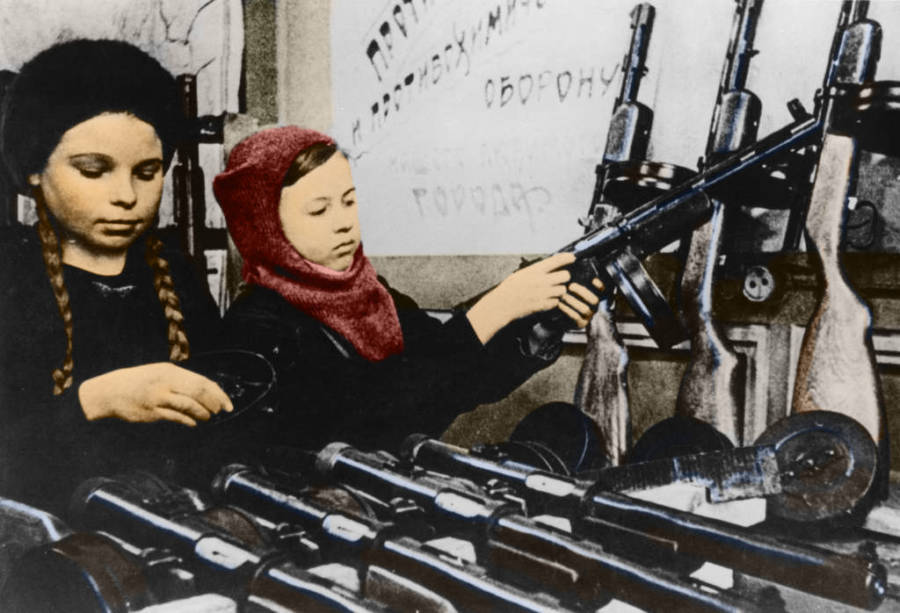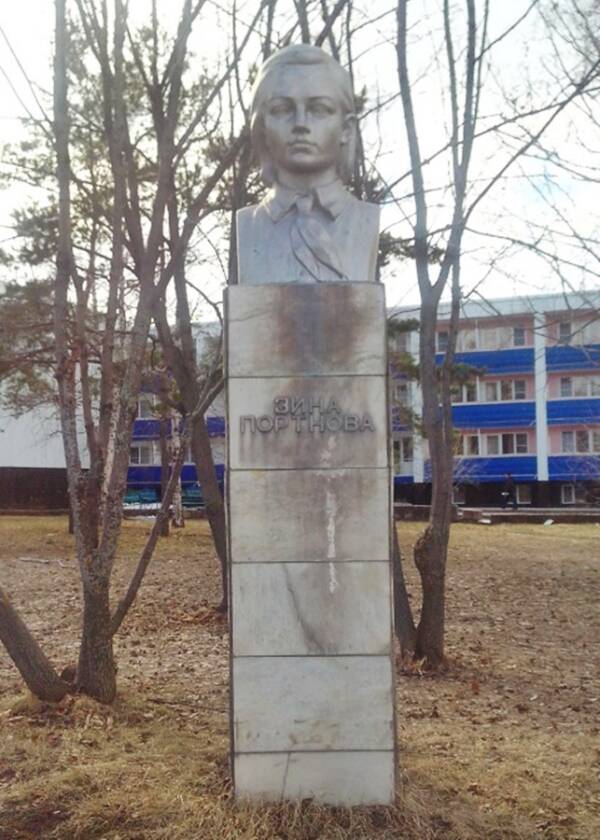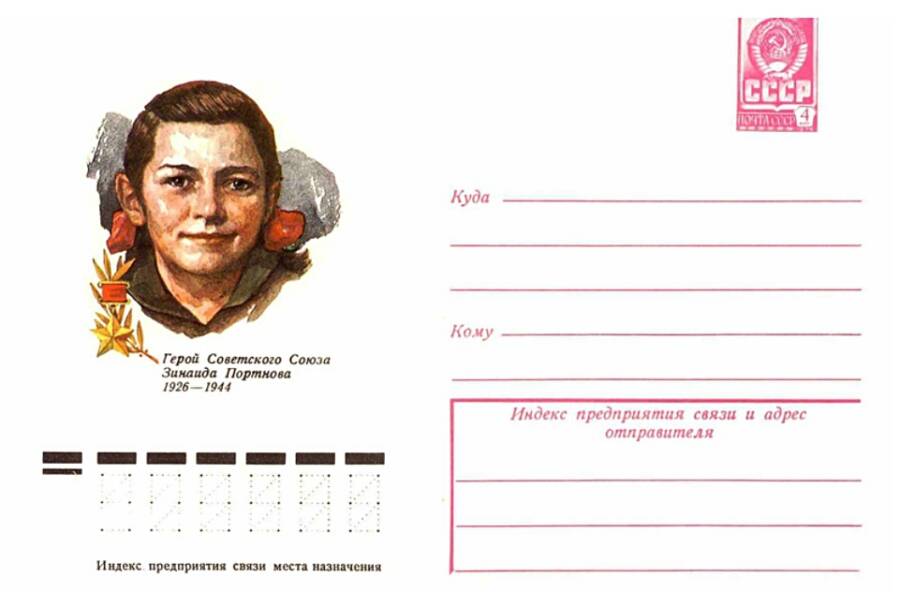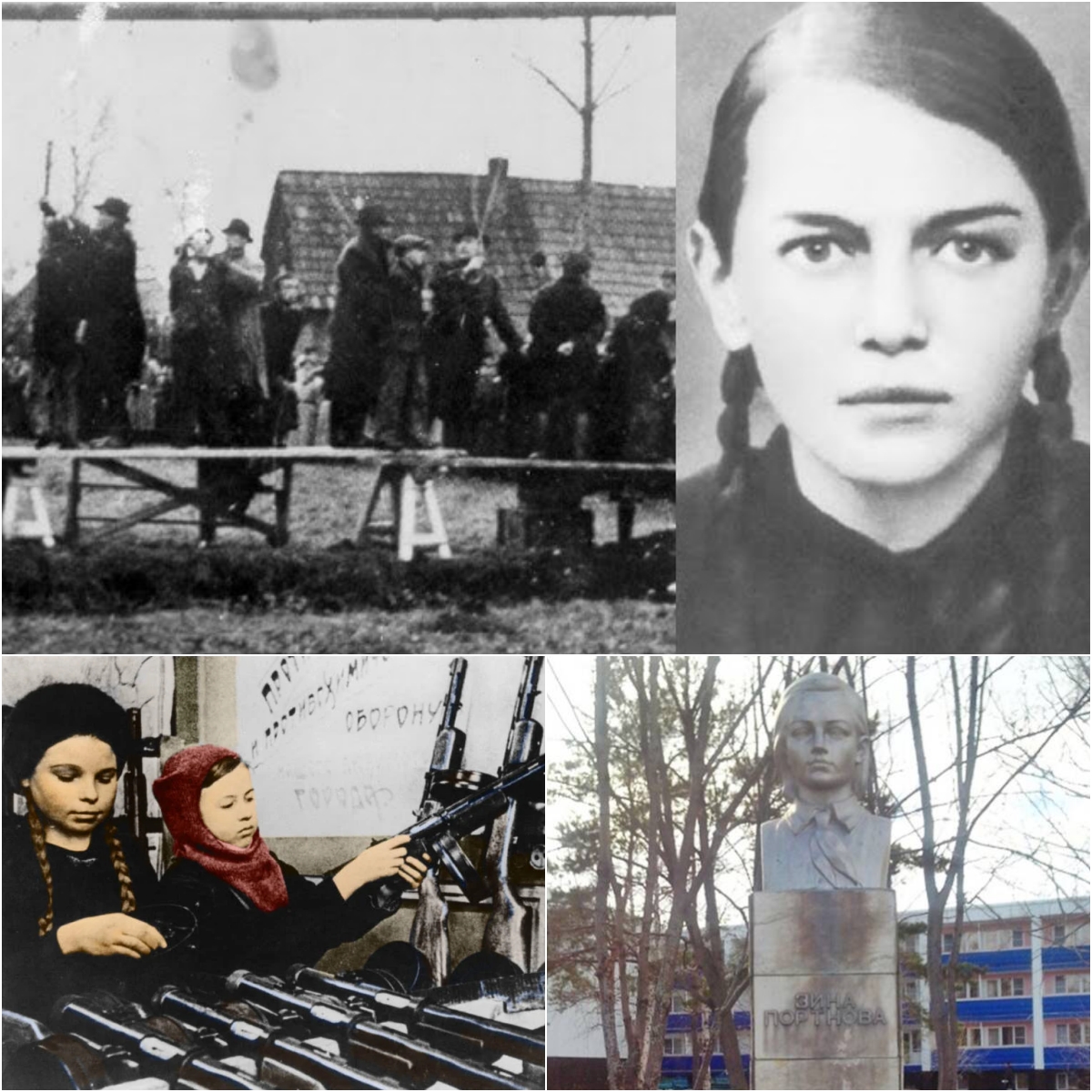In the turbulent years of World War II, countless ordinary people rose to extraordinary challenges. Among them was Zinaida Portnova, a teenager from Belarus who became one of the youngest and most celebrated heroines of the Soviet Union. At only sixteen, she was actively participating in sabotage missions, distributing underground propaganda, and helping partisans resist occupation. Her story reflects not only youthful bravery but also the spirit of defiance shared by many who refused to submit to oppression. On July 1, 1958, Portnova was posthumously awarded the title Hero of the Soviet Union, becoming the youngest female to receive the USSR’s highest honor. Today, her life continues to inspire generations as a symbol of resilience, courage, and sacrifice.
Early Life in Leningrad and Belarus

Zinaida Martynovna Portnova was born on February 20, 1926, in Leningrad (modern-day St. Petersburg) into a working-class Belarusian family. Her father was employed at the famous Kirov Plant, a major industrial site in the Soviet Union. In the summer of 1941, shortly before her 15th birthday, Zinaida traveled with her younger sister Galya to stay with their grandmother in the village of Zui, near Obol in Belarus. What was intended to be a simple family visit coincided with one of the most dramatic turning points of the 20th century: Operation Barbarossa, Nazi Germany’s invasion of the Soviet Union on June 22, 1941. The sudden arrival of occupying forces profoundly changed Zinaida’s life. Local accounts note that the occupation deeply affected her family, planting the seeds of her resolve to resist.
Joining the Resistance: The Young Avengers
By 1942, at the age of 16, Zinaida had joined a youth partisan organization known as the Young Avengers, an underground resistance group associated with the Soviet Komsomol (All-Union Leninist Young Communist League). Her initial tasks were modest yet dangerous: distributing anti-occupation leaflets to inform locals of Soviet efforts, gathering intelligence such as noting the movements of enemy troops, and securing weapons and supplies to pass on to older partisan fighters. Despite her age, Zinaida quickly gained a reputation for resourcefulness. Over time, she received training in basic explosives handling and firearms, expanding her role within the movement.
Sabotage Missions and Growing Reputation

At just 16 and 17, she participated in operations aimed at undermining the occupation forces. These included damaging power stations and pumps, disrupting supply lines, targeting factories and depots that supported the occupation, and assisting in actions coordinated with partisan detachments in the Belarusian forests. While precise numbers of her operations remain debated among historians, Soviet accounts credited her with a role in numerous missions that significantly disrupted the occupiers’ ability to control the region.
The Famous Kitchen Incident
Perhaps the most frequently retold story of Portnova’s resistance took place in 1943. At 17, she managed to infiltrate a garrison by posing as a kitchen aide. During her time there, she reportedly attempted to undermine the troops through food sabotage. Suspicion fell upon her, but she cleverly deflected blame, demonstrating quick thinking and remarkable composure for someone her age. She returned to her family’s home ill but alive, and later joined a partisan unit named after Soviet commander Kliment Voroshilov. This episode has since become legendary in Soviet and Belarusian historical memory, often recounted in schools, museums, and commemorations as an example of both daring and youthful ingenuity.
Capture and Final Mission

In early 1944, Portnova took part in a reconnaissance mission near Obol. Accounts suggest that she was eventually detained during this operation. Despite being only 17 years old, she had already gained a reputation among local resistance groups and occupying forces as a determined fighter. Her capture marked the tragic final chapter of her life. While the exact details remain reconstructed from post-war testimonies and partisan records, what is clear is that she did not survive the conflict, passing away in January 1944, just before her 18th birthday.
Recognition and Legacy
Though her life was cut short, Zinaida Portnova’s courage was formally recognized more than a decade later. On July 1, 1958, she was posthumously awarded the title Hero of the Soviet Union, along with the Order of Lenin. This cemented her place in history as one of the youngest female recipients of the honor. Her legacy is preserved in multiple ways: monuments and statues in Minsk and Obol commemorate her sacrifice, a museum along the Polotsk–Vitebsk highway highlights her story and that of other partisans, schools, youth organizations, and Pioneer groups were named after her during the Soviet period, and cultural works, including Soviet-era films and literature, celebrated her life as a symbol of youthful patriotism.
Comparisons with Other Soviet Heroines

Portnova’s story often appears alongside that of other young Soviet heroines such as Mariya Oktyabrskaya, who famously drove a tank into battle, and Roza Shanina, a sniper recognized for her service. While each followed a different path, they collectively illustrate the significant roles women and young people played in the broader Soviet resistance.
The Debate Around Her Story
As with many wartime narratives, historians continue to discuss the accuracy of some details of Portnova’s missions. For example, the full impact of the kitchen poisoning story is difficult to confirm from independent German records. Some scholars argue that Soviet post-war commemorations may have emphasized certain elements for morale and propaganda purposes. Yet regardless of the exact scope of her activities, the historical consensus affirms her bravery. Her willingness to risk her life in the face of overwhelming danger remains an undeniable testament to her character and to the broader youth resistance movement.
Enduring Inspiration
Zinaida Portnova’s life has become a touchstone for discussions about youth, resilience, and resistance. For Belarus, Russia, and the wider world, her actions highlight the extraordinary impact one individual—especially someone so young—can have when driven by conviction. Her story continues to resonate in the 21st century: in schools, she is remembered as a role model for courage; on social media, users rediscover her biography, calling her a “teenage legend” and “one-woman army”; and in academic discussions, she represents the importance of integrating youth experiences into the broader study of World War II.
Conclusion
The story of Zinaida Portnova is not just about wartime heroism; it is about the power of conviction, the role of youth in history, and the sacrifices made in the pursuit of freedom. From a schoolgirl in Leningrad to a celebrated partisan in Belarus, her short life continues to inspire generations. At 16, she was already challenging one of the most powerful regimes in the world. At 17, she became a legend. Her memory lives on in monuments, in education, and in the cultural heritage of Eastern Europe. Zinaida Portnova’s legacy challenges us to reflect on the courage it takes to resist injustice and to honor those who stood firm against overwhelming odds.
Sources
-
Encyclopedia Britannica – World War II and Resistance Movements
-
Henry Sakaida, Heroines of the Soviet Union 1941–45 (Specialty Press, 1999)
